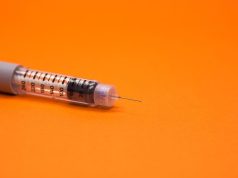Greatest cost reduction for statin/TG-specific-treated patients with TG level drop of ≥30 percent
FRIDAY, Jan. 27, 2017 (HealthDay News) — For patients with type 2 diabetes mellitus, there is a substantial economic benefit to treatment with statin-triglyceride (TG)-specific combination lipid therapy compared with monotherapy or no lipid pharmacotherapy, according to a study published in the Feb. 1 issue of The American Journal of Cardiology.
Gregory A. Nichols, Ph.D., from the Kaiser Permanente Center for Health Research in Portland, Ore., and colleagues examined the economic impact of TG-lowering therapies in an observational cohort study involving 184,932 patients with diabetes mellitus who had two TG measurements three to 15 months apart. Four therapy groups were identified: statin monotherapy (77.6 percent), TG-specific monotherapy (0.5 percent), statin/TG-specific combination therapy (1.1 percent), or no therapy (20.8 percent); these groups were stratified by percent change in TG.
The researchers found that statin/TG-specific agent recipients had a mean one-year total cost reduction of $1,110, after adjustment for covariates. Statin/TG-specific combination therapy patients who reduced TG levels by ≥30 percent had the greatest cost reduction (−$2,859). A large reduction in adjusted costs was also seen for statin monotherapy patients who reduced TG by ≥30 percent (−$1,079).
“In conclusion, we found a substantial economic benefit to treating diabetic patients with statin/TG-specific combination lipid therapy compared with monotherapy of either type or no lipid pharmacotherapy,” the authors write. “A TG reduction of ≥30 percent produced a particularly large reduction in one-year medical costs.”
The study was funded by an agreement between Kaiser Permanente Center for Health Research and AstraZeneca. Several authors disclosed financial ties to AstraZeneca, and one disclosed ties to other pharmaceutical companies.
Full Text (subscription or payment may be required)
Copyright © 2017 HealthDay. All rights reserved.








